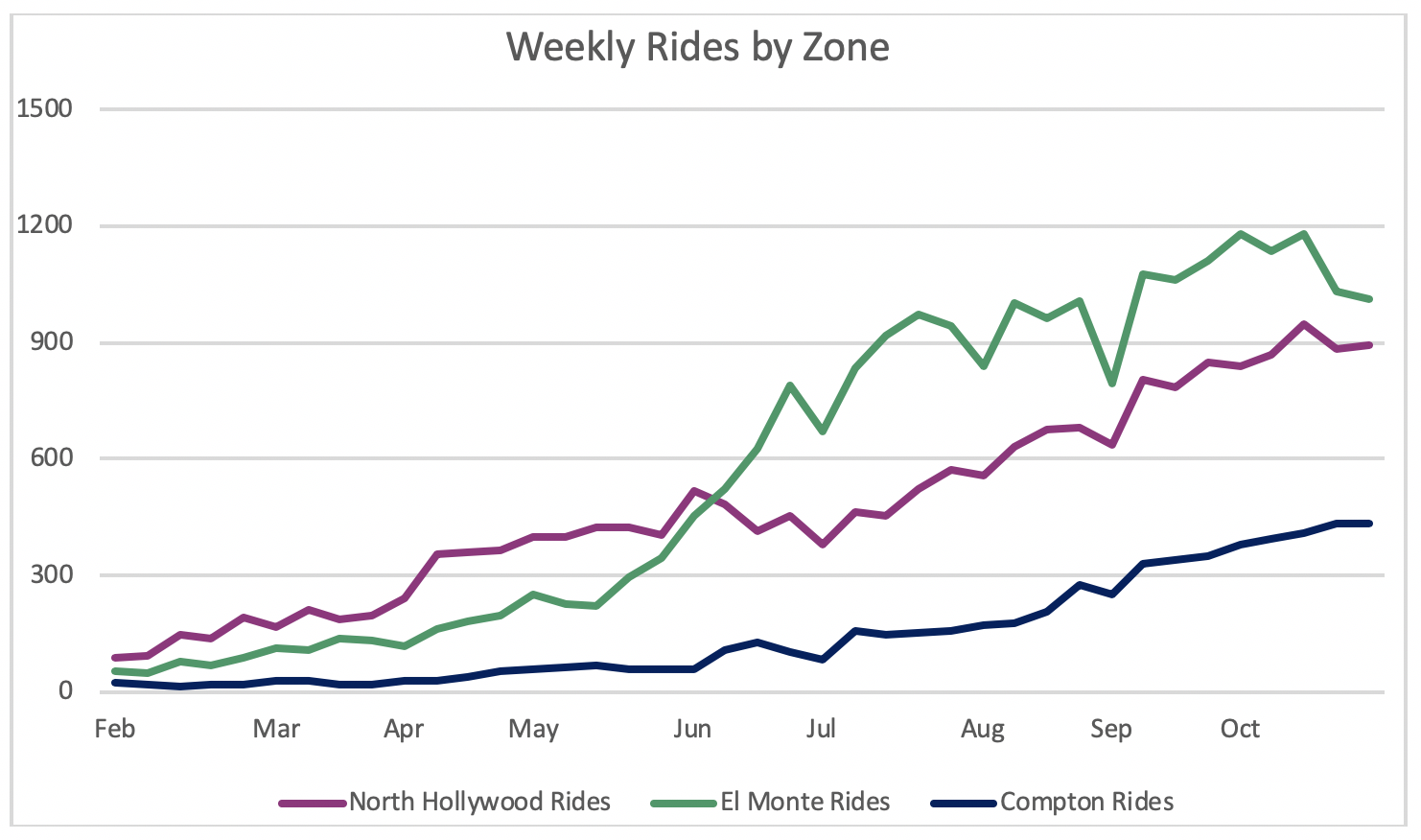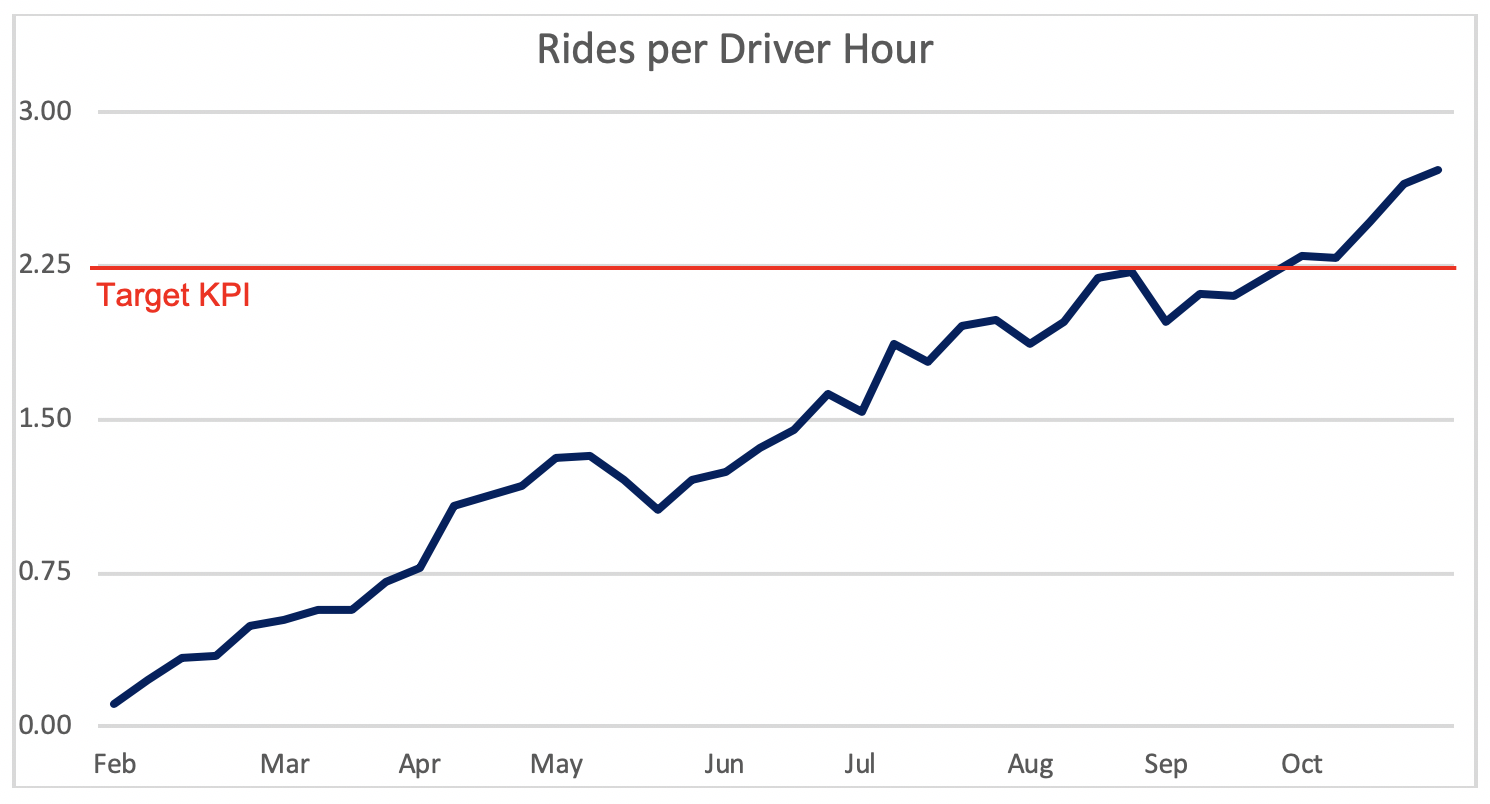‘Tis the season for sharing, and what better way to get into the spirit than with shared rides? Los Angeles County Metropolitan Transportation Authority (LA Metro) has teamed up with ride share company Via to provide shared, first last mile, on-demand rides. The holiday season marks over 10 months of the pilot’s operation, and we can celebrate continued upward growth in ridership and efficiency measures.
The rides were made possible in large part through a generous gift last holiday season (Mobility on Demand Sandbox Grant) for new mobility research from the Federal Transit Authority. The project makes ride-hailing services available to users who would not otherwise have access, like riders who use wheelchairs and riders who do not have smart phones. It also promotes sustainability and congestion reduction through shared rides and expands the reach of LA Metro fixed-route services. The rides are a free transfer to and from LA Metro and Metrolink services.

The project is joining hands of the public and private sectors to optimize new technology (practically peace on earth). So far, we have seen sustained customer interest, high customer satisfaction and have been able to improve efficiency as more people use the service. Below are the specifics on the pilot’s performance so far.

The El Monte service area has seen the highest ridership, followed closely by North Hollywood. The Compton zone has lagged, likely due to significant service closures on the key rail line serving the area. Now that the A Line (Blue) is reopened, we hope to see more riders taking advantage of the service.

Riders per driver hour is a key measure of efficiency and also has an upward trend.
The project has met all of its performance targets. While the average wait time crept up past the 10-minute target at the end of the third quarter, it had mostly been within the target previously. This highlights the tradeoff between wait time and vehicle efficiency, and Via will continue to adjust the service supply to balance both.
| Measure |
Target |
Q1 end |
Q2 end |
Q3 end |
Target Met? |
| Avg wait time |
10 min |
7 min |
9 min |
11.5 min |
No |
| Avg Customer Rating |
4.5 |
4.9 |
4.9 |
4.8 |
Yes |
| Rides/ driver hour |
2.5 |
1.12 |
1.8 |
2.7 |
Yes |
| Weekly rides |
1000 |
585 |
1675 |
2336 |
Yes |
Further north: LA Metro’s pilot has been in conjunction with a similar pilot, also a partnership with Via, in the Puget Sound area. The Via service there has seen even higher adoption and efficiency with over 7,000 rides per week and over five rides per driver hour. The Seattle area service differs from the LA service because it runs during evenings and weekends, the rides are provided in a dedicated, branded fleet of vehicles, and the service zones are contiguous for a more efficient operation. We are exploring the possibility of implementing some of these features in a potential second year of the pilot.
How much gelt? Projects like this one have sometimes been criticized for being expensive and poorly utilized compared to traditional bus services, but we view things differently. While ride-sharing may not be as efficient as a full-sized bus in a dense neighborhood during peak hours, ride-sharing can be more efficient in spread out neighborhoods, during off hours, and to help close first/last mile gaps. Ride share can have much shorter wait times, provide a superior customer experience, and get you to many more destinations.
Good will toward all: Requests for wheelchair accessible vehicles continue to account for about 1% of total rides. By comparison, 0.5% of LA Metro Bus trips are made by people in wheelchairs. A small number of riders are booking Via rides through their call center, but we know that many LA Metro riders do not have access to smartphones. This is an area where additional outreach can make a difference. Our research partners are gathering survey data to help us understand who exactly the project is serving.
Happy New Year! In the new year, California will implement a new law that will impact the pilot. The law known as AB 5 changes the test that determines whether drivers and other workers are employees. To date, Uber and Lyft have taken the position that the law does apply to them, but LA Metro believes it does. LA Metro is updating the pilot contract with Via to require that drivers become employees. The first year of the pilot will be up at the end of January 2020, and LA Metro and Via are negotiating a second year.

We have and will continue to take learnings from this pilot to inform the LA Metro MicroTransit Pilot that we plan to launch next year. MicroTransit is distinct because it will not be anchored to transit stations, but instead will have free-standing zones and will be operated by Metro employees. But it is on-demand, a type of service we believe can serve riders well both during the holidays and all year long.
‘Twas the holiday season when all through the city,
Bright lights were twinkling and looking quite pretty
When, what to my transit geek eyes should appear?
But a ride-sharing platform to last throughout the year.
Not just for the able and rich with smart phones
But for one and all who reside in the zones.







